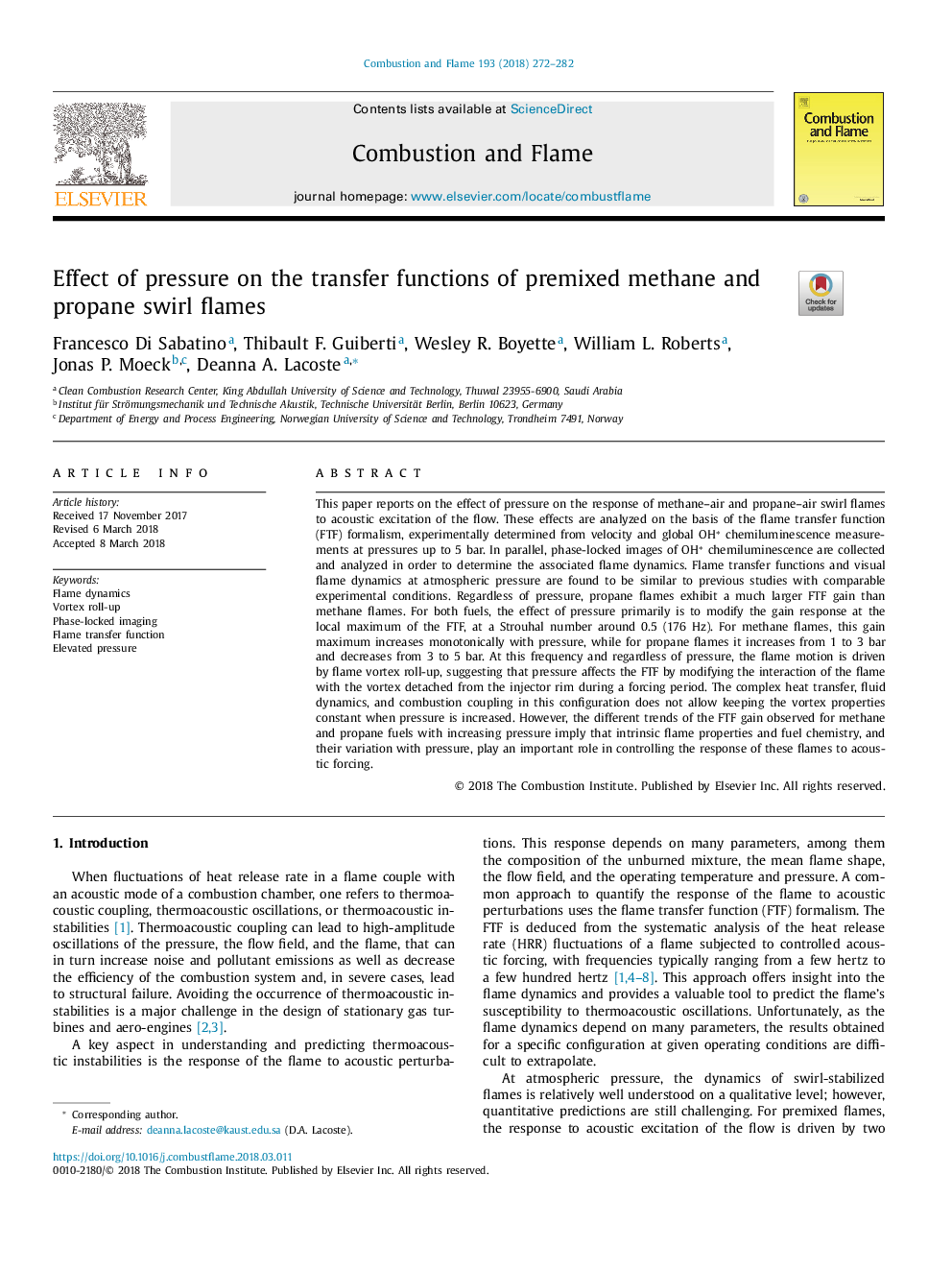| کد مقاله | کد نشریه | سال انتشار | مقاله انگلیسی | نسخه تمام متن |
|---|---|---|---|---|
| 6593577 | 1423544 | 2018 | 11 صفحه PDF | دانلود رایگان |
عنوان انگلیسی مقاله ISI
Effect of pressure on the transfer functions of premixed methane and propane swirl flames
ترجمه فارسی عنوان
اثر فشار بر توابع انتقال متان و مخلوط آتشفشان پیش مخلوط
دانلود مقاله + سفارش ترجمه
دانلود مقاله ISI انگلیسی
رایگان برای ایرانیان
کلمات کلیدی
پویایی شعله، گرداب گردان تصویربرداری قفل شده با فاز، عملکرد انتقال شعله، فشار بالا،
موضوعات مرتبط
مهندسی و علوم پایه
مهندسی شیمی
مهندسی شیمی (عمومی)
چکیده انگلیسی
This paper reports on the effect of pressure on the response of methane-air and propane-air swirl flames to acoustic excitation of the flow. These effects are analyzed on the basis of the flame transfer function (FTF) formalism, experimentally determined from velocity and global OH* chemiluminescence measurements at pressures up to 5Â bar. In parallel, phase-locked images of OH* chemiluminescence are collected and analyzed in order to determine the associated flame dynamics. Flame transfer functions and visual flame dynamics at atmospheric pressure are found to be similar to previous studies with comparable experimental conditions. Regardless of pressure, propane flames exhibit a much larger FTF gain than methane flames. For both fuels, the effect of pressure primarily is to modify the gain response at the local maximum of the FTF, at a Strouhal number around 0.5 (176Â Hz). For methane flames, this gain maximum increases monotonically with pressure, while for propane flames it increases from 1 to 3 bar and decreases from 3 to 5 bar. At this frequency and regardless of pressure, the flame motion is driven by flame vortex roll-up, suggesting that pressure affects the FTF by modifying the interaction of the flame with the vortex detached from the injector rim during a forcing period. The complex heat transfer, fluid dynamics, and combustion coupling in this configuration does not allow keeping the vortex properties constant when pressure is increased. However, the different trends of the FTF gain observed for methane and propane fuels with increasing pressure imply that intrinsic flame properties and fuel chemistry, and their variation with pressure, play an important role in controlling the response of these flames to acoustic forcing.
ناشر
Database: Elsevier - ScienceDirect (ساینس دایرکت)
Journal: Combustion and Flame - Volume 193, July 2018, Pages 272-282
Journal: Combustion and Flame - Volume 193, July 2018, Pages 272-282
نویسندگان
Francesco Di Sabatino, Thibault F. Guiberti, Wesley R. Boyette, William L. Roberts, Jonas P. Moeck, Deanna A. Lacoste,
